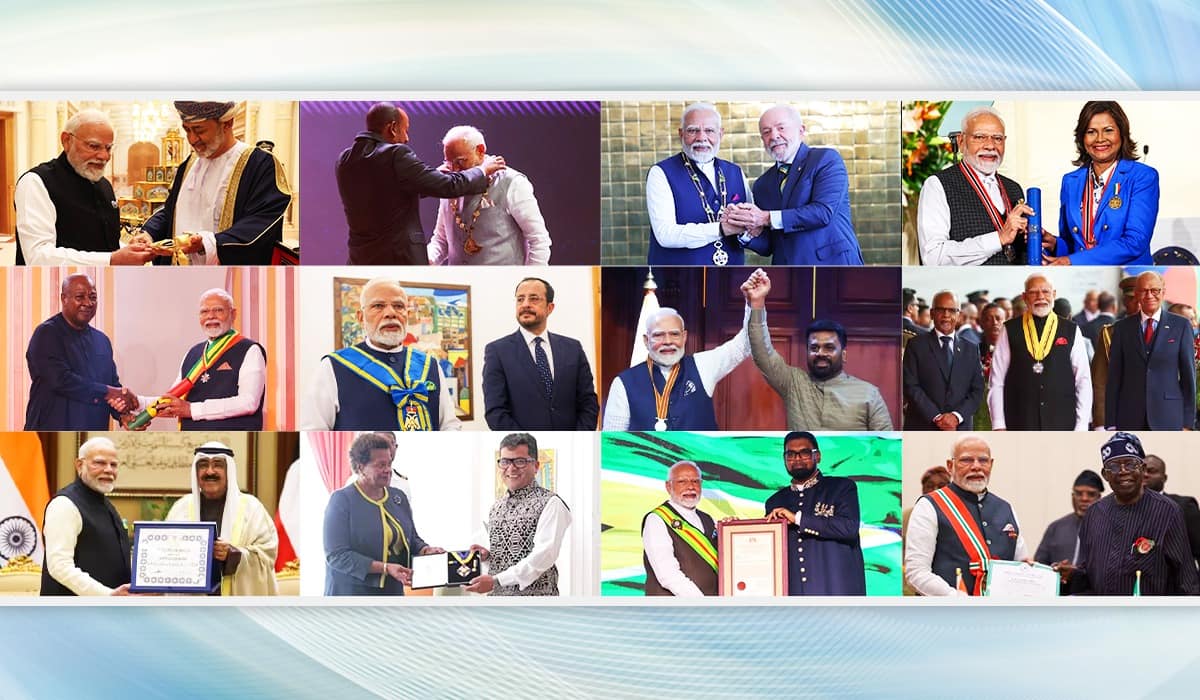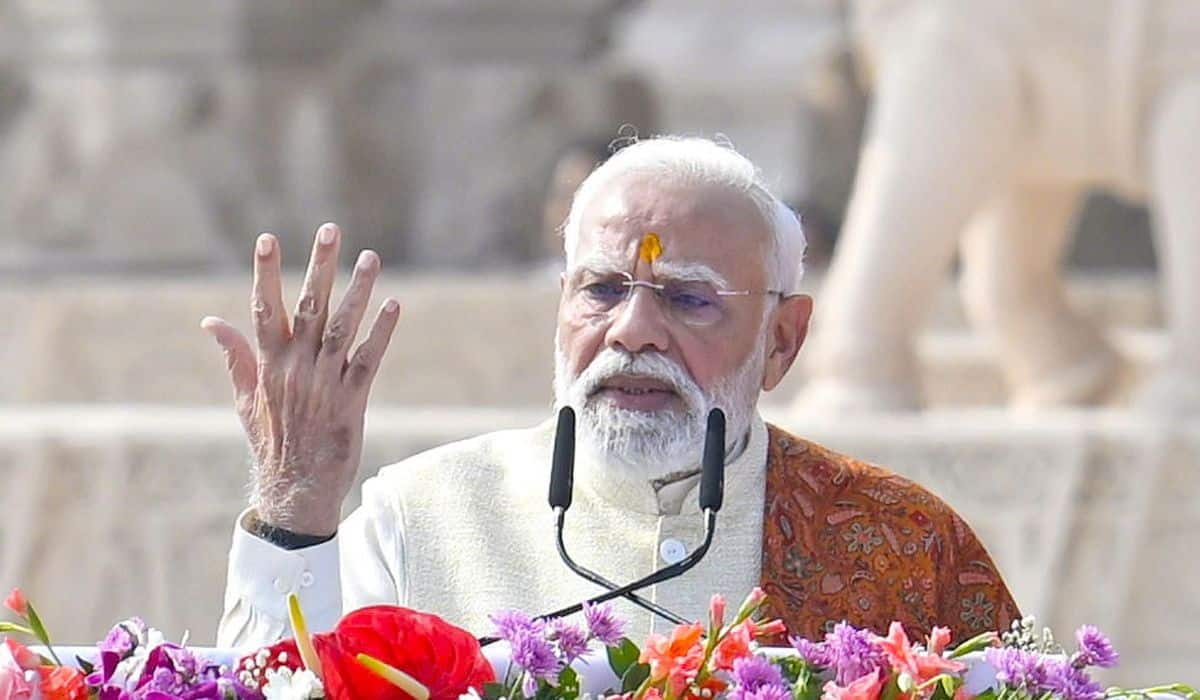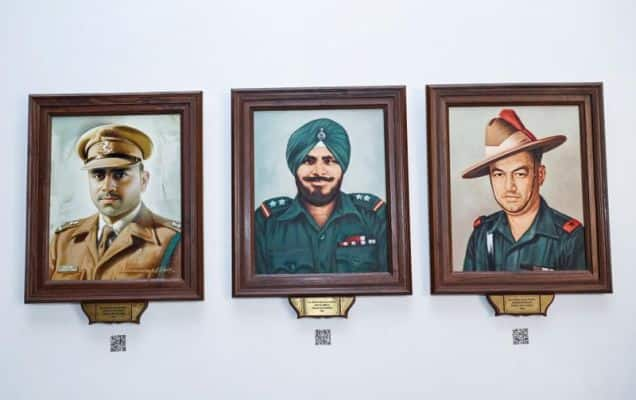Prime Minister Karim Mossimov,
Mr. Shigeo Katsu, President of the University,
Students and eminent guests.
I am delighted to be here.
Mr. Prime Minister, I am deeply honoured that you have joined us today. You are a person of learning and many talents. I learnt today that your skills in Hindi and yoga are among them.
It is a great privilege to embark on a journey of all five nations of Central Asia. This might be the first time this has happened.
I am truly excited to visit a great country and a great region that has been called the pivot of human history.
It is a land of beauty and cultural splendor, of outstanding achievements and great heroism.
It is also a region of continuous engagement with India since human civilisation began.
So, I have come here, drawn by history and goodwill and as a neighbour, to write a new chapter in an ancient relationship.
Tonight, as I speak to the people of Central Asia, I could not have a chosen a better venue than the Nazarbayev University.
In its short life, it has emerged as an excellent centre of education. And, I congratulate the first batch that has graduated this year.
The university reflects the vision of President Nazarbayev that education is the foundation of a nation's progress and leadership.
It recalls the wisdom of the great Kazakh writer, Abai Kunanbaev, who spoke about education as the shield and pillar for Kazakh people.
Today, Kazakhstan is a nation of global stature and respect. This is not just because Mother Nature has been generous to you with resources of every kind.
It is because of your investment in education, human resources and infrastructure. These have helped increase the size of the economy four times in the last ten years.
It is because of your leadership in advancing peace and cooperation in the great Eurasian region.
It is your vision that has given us the Conference on Interaction and Confidence Building in Asia.
Kazakhstan is a voice of responsibility and maturity in international forums, including the United Nations.
No Indian will forget Kazakhstan's generosity in making way for India's bid for the membership of the UN Security Council in 2011-12. We stand solidly behind you for your bid in 2017-18.
Like Kazakhstan, the rest of Central Asia is on the rise. It is just over two decades since nations here gained independence and regained their identity.
The countries of Central Asia are endowed with rich human and natural resources.
I am coming from Tashkent. Uzbekistan is experiencing rapid economic growth and progress. Turkemistan, Tajikistan and Kyrgystan are turning their resources into a promise of a more prosperous future.
You have built modern, inclusive and pluralist nations at a time when many in the region are caught in conflict and instability.
Your success is as important for the region as it is for the world.
Central Asia is at the crossroads of Eurasia. It has been caught in the currents of history and it has also shaped it.
It has seen rise and fall of empires. It has witnessed trade thrive and ebb.
For monks, merchants and monarchs, it has been both - a destination and a passage.
It has been an intermediary of cultures and faiths from across Asia.
Your gifts to human civilisation have been rich. Your imprint on human progress has been lasting.
And, over the last two thousand years and more, India and Central Asia have influenced each other profoundly.
For centuries, Buddhism flourished in this part of the world and even influenced Buddhist Art in India. Through here, it spread eastward.
As I stood in the Gandan Monastery in Mongolia this May, I marveled at that journey of faith that linked Asia across its daunting landscape.
The confluence of Indian and Islamic civilisations took place in Central Asia. We enriched each other not only in spiritual thought, but also in medicine, science, mathematics and astronomy.
The Islamic heritage of both India and Central Asia is defined by the highest ideals of Islam – knowledge, piety, compassion and welfare. This is a heritage founded on the principle of love and devotion. And, it has always rejected the forces of extremism.
Today, this is an important source of strength that brings India and Central Asia together.
The richness of our ties is written into the contours of our cities and our daily lives. We see this in architecture and art, handicraft and textile and in most popular food.
The dargahs of Delhi resonate with Sufi music that draws people from all faiths.
The cities of Central Asia have become centres of yoga and Hindi, long before the world came together to celebrate the International Day of Yoga on 21st June.
Uzbekistan has recently completed fifty years of radio broadcast in Hindi. Our epics Ramayana and Mahabharata were popular on Uzbek TV as they were in India.
Many of you wait for the release of the latest Bollywood film with the same excitement as people in India.
This is the source of goodwill between our people. It is the foundation of a relationship of hearts and emotions. And, it cannot be measured only by the scale of trade or the demands of States.
It was evident when President Nazarbayev and the leaders of other Central Asian Republics came to India soon after their nation's independence.
Since then, our political engagement has deepened. Our defence and security cooperation is growing.
Trade is expanding, but it is still modest. Our cooperation in energy sector has begun. Later today, we will launch the drilling of the first oil well with Indian investments in Kazakhstan.
Indian investments in Central Asia have started flowing in. And, so have Indian tourists in growing numbers. More than 50 flights a week connect the five Central Asian capitals to India. And, it takes about the same time as it would take to fly to Chennai from Delhi.
Our strongest progress is in human resource development. Thousands of professionals and students from Central Asia have trained in India. Many from India come to the universities in the region.
We have established Centres of Excellence in Information and Communication Technology in the region. And, we are also pleased that we have three Indian cultural centres in the region.
Yet, we will be the first to say that the engagement between India and Central Asia falls short of its promise and potential.
We have a special place in our hearts for each other. But, we have not paid as much attention to each other as we should.
This will change.
That is why I am travelling to all five countries in the region in the early stages of my Government.
Both India and Central Asia cannot achieve their full potential without each other. Nor will our people be safer and our region more stable without our cooperation.
India constitutes one-sixth of humanity. It is a nation of 800 million youth that is an enormous force of progress and change for India and the world.
Our economy is growing at 7.5% every year. We can sustain higher growth rates long into the future.
India is the new frontier of opportunities for the world.
Central Asia is a vast region of immense resources, talented people, rapid growth and a strategic location.
So, I am here to start a new era in our relationship with Central Asia.
India is prepared to invest more in a new partnership of prosperity.
We will work together not just in minerals and energy, but in industries such as pharmaceuticals, textiles, engineering and small and medium enterprises. We can invest in refineries, petrochemicals and fertilizer plants here.
We can harness our strength in information and communication technology to create wealth and opportunities for our youth. Today, I will inaugurate a Centre of Excellence in Astana with a Super Computer from India.
We can use the reach of Space technology for closer partnership in development and resource management.
I also see vast opportunities in areas like agriculture and dairy. We can renew our old ties in traditional medicines.
Central Asia is a natural destination for the Indian tourists.
We are intensifying our exchanges in culture, education and research. And we will connect our youth more.
In this troubled world, we must also strengthen our defence and security cooperation to defend our values, our nations' security and our region's peace.
We live at the frontier of instability. We live close to the crucible of extremism and terrorism.
We see terrorism spawned by nations and groups. Today, we also see cyber space become a platform without borders for terror to draw recruits to its cause.
From theatres of conflicts to the calm neighbourhoods of distant cities, terrorism has become a global challenge as never before.
It is a force that is larger and more enduring than its changing names, locations and targets.
So, we must ask ourselves: Will we let a generation of youth be lost to guns and hate, because they will hold us accountable for their lost future?
So, during this visit, we will strengthen our defence and security cooperation in the region. But, we will also combat terrorism by the strength of our values and our commitment to humanism.
This is a responsibility that India and Central Asian nations owe to our shared inheritance and to the future of our region.
Our shared values and aspirations are also the foundation of closer international partnership, including in the United Nations.
But, in a transformed world, we also see the growing institutional erosion of the United Nations. As nations that are committed to international order, we must work to make it relevant to our times. So, as the United Nations turns 70, we should press for reforms of the United Nations, especially its Security Council.
India's membership of Shanghai Cooperation Organisation will deepen our regional partnership.
And we have begun a study on a Free Trade Agreement with the Eurasian Economic Union for deeper integration with this region.
This is an era in which Space and Cyber are making roads and rails less relevant.
But, we will also restore our physical connectivity for trade, transit and energy.
The International North South Transport Corridor opens a competitive and quick route for India to Eurasia. And, I hope all of Central Asia will join it.
We hope to join the Ashgabat Agreement on trade and transit.
India's investment in Chahbahar Port in Iran will bring us closer to Central Asia.
I also hope that we can restore the traditional route to Central Asia through Pakistan and Afghanistan.
We can draw confidence from the agreement between Turkmenistan, Afghanistan, Pakistan and India on the gas pipeline.
This region has prospered the most when we have been connected.
Indeed, our hopes of an Asian Century will be realized, when we see Asia as one - not as South, West, East or Central. Asia will rise when we all prosper together.
For that, we must connect Asia's different parts.
India is at the crossroads of Asia's land and sea routes. We understand our responsibility. And, we are working with a sense of priority to connect ourselves to the East and the West, by land and sea.
There is a surge of interest in reconnecting Asia with itself and beyond.
Our former Prime Minister Atal Bihari Vajpayee ji called for a New Silk Route Initiative here in 2002.
Today, all of Asia seeks the revival of the glorious ancient Silk Road.
But, we must also remember the lessons of history.
The Silk Road flourished and waned with the fortunes of Central Asia.
The end of the Silk Road did not just come about from the rise of sea-based trade of the new European powers.
It also happened because Central Asia was no longer a bridge between regions, but the new fault line between great empires to the east, west and south;
When it was no longer the hub of trade, but a land in the shadows of the high walls of the powers around it. Central Asian nations declined and trade withered.
The success of connectivity through and across Central Asia is important.
For that, the great nations of Central Asia must flourish and regain their central role in Eurasia.
From Europe to Asia, all nations must foster a climate of cooperation and collaboration, not competition and exclusion, in this region.
The region must remain stable and peaceful, free from conflict and the violence of extremism and terrorism.
And, as Central Asia links the East and the West, it must also connect to the South.
For that is how it always was.
In an age of globalization, Asia cannot remain fragmented. And, Central Asia cannot remain distant and disconnected from India.
I am confident that we can make it happen. Our ancestors crossed the mighty Himalaya, Karakoram, Hindu Kush and Pamirs for spiritualism, knowledge, and markets.
We will all work together to build the Silk Route of the 21st century. We will connect through space and cyber as we will by air, land and sea.
Let me conclude with a few lines from Abduraheim Otkur, a poet of this region. He said:
“Our tracks remain, our dreams remain, everything remains, far away, yet
Even if the wind blows, or the sand shift, they will never be covered, our tracks,
And the caravan will never stop along the way, though our horses are very thin;
One way or another, these tracks will be found someday, by our grandchildren;
Or our great grandchildren.”
I say this to you: India and Central Asia will redeem that promise.
Thank you.




.JPG)
.JPG)
.JPG)




















